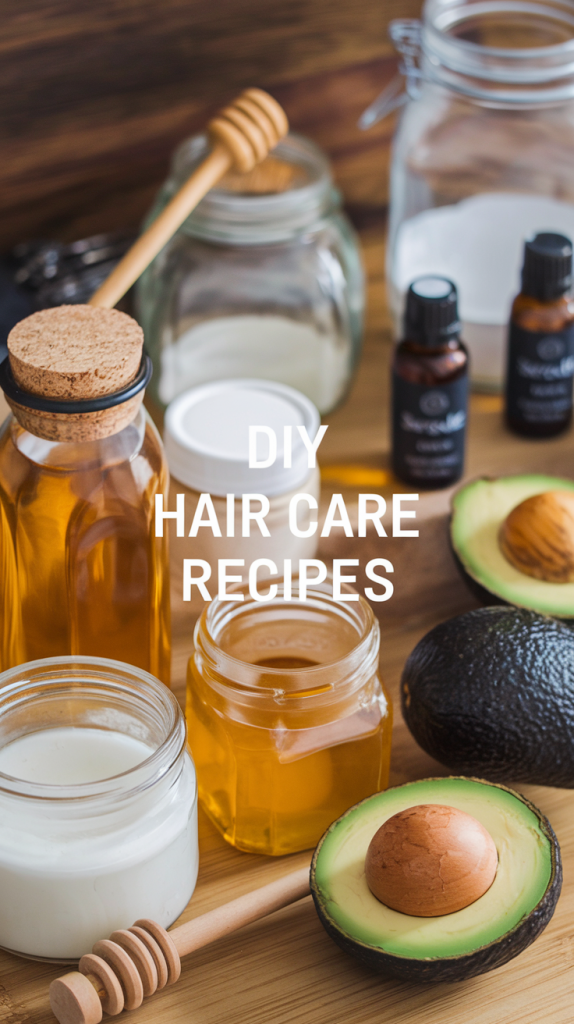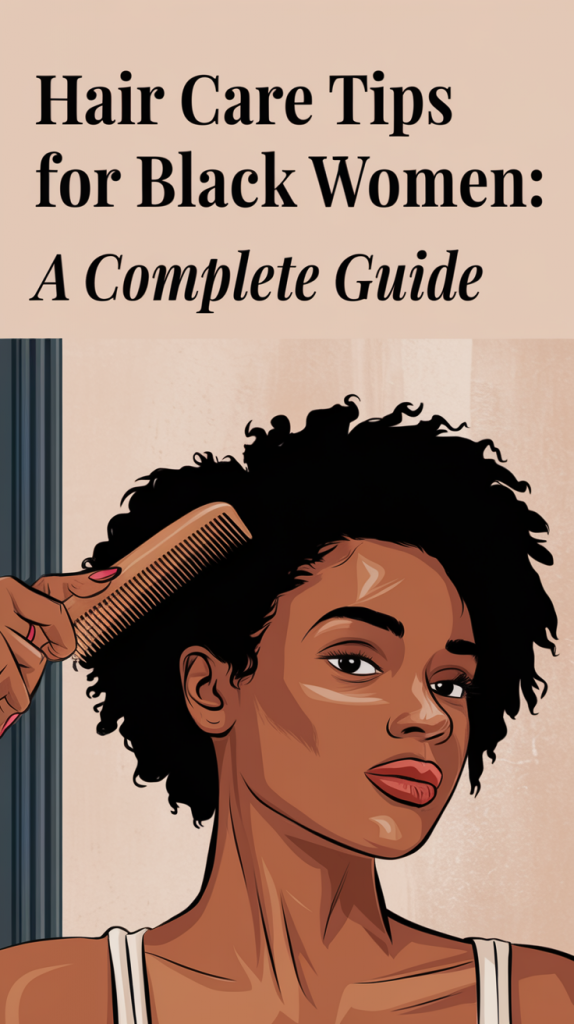Hair Care Tips for Black Women: A Complete Guide
Caring for natural hair is more than just a routine; it’s a journey of self-expression and empowerment. Over the years, I’ve tried countless techniques, products, and routines to keep my hair healthy and thriving. On my journey, I’ve learned that Black hair, with its beautiful textures and curls, deserves a unique approach. Let’s explore practical, personalized tips to help you love and care for your hair.

Understanding Your Hair Type and Porosity
Every hair care journey starts with understanding your hair’s unique needs. Knowing your curl pattern (e.g., 3C, 4A) and porosity helps you select the right products and techniques.
Identifying Hair Porosity
- Low Porosity: Hair cuticles are tightly sealed, making it harder to absorb moisture.
- Normal Porosity: Hair absorbs moisture well and retains it for longer.
- High Porosity: Hair easily absorbs moisture but loses it quickly due to raised cuticles.
Table: Hair Porosity and Care Tips
| Porosity | Characteristics | Care Tips |
|---|---|---|
| Low | Moisture-resistant, shiny | Use lightweight, water-based moisturizers and apply heat while conditioning. |
| Normal | Well-balanced moisture retention | Stick to a consistent routine with balanced hydration. |
| High | Prone to dryness, frizz | Use heavier oils and butters to seal in moisture. |
Cleansing and Pre-Wash Treatments
Keeping your scalp clean is key to healthy hair, but over-washing can strip natural oils.
Pre-Wash Treatments
A pre-wash, or “pre-poo,” protects your strands before shampooing. Some of my favorites include:
- Coconut Oil: Reduces protein loss.
- Aloe Vera Gel: Soothes the scalp and adds hydration.
Cleansing Routine
- Wash your hair once a week or every two weeks.
- Use sulfate-free shampoos to avoid dryness.
- Follow with a moisturizing conditioner for elasticity.
Moisturizing and Sealing
Black hair thrives on moisture, and consistent hydration is crucial.
Daily Moisturizing
Use a water-based moisturizer or create your own spray:
- Mix aloe vera juice, water, and glycerin for an easy leave-in.
Sealing Techniques
After moisturizing, lock in hydration with oils such as:
- Castor Oil: Thick and deeply moisturizing.
- Jojoba Oil: Mimics natural sebum.
Table: Moisturizers and Sealants
| Product Type | Examples | Benefits |
|---|---|---|
| Water-Based | Aloe vera spray | Hydrates and refreshes curls. |
| Oils/Sealants | Castor, jojoba oils | Locks in moisture and adds shine. |
Protective Styling and Night Care
Protective Styles
Reduce daily manipulation with styles like:
- Braids, Twists, or Bantu Knots: Low-maintenance and chic.
- Wigs or Extensions: Protect natural hair from harsh weather.
Nighttime Protection
- Use satin or silk scarves and pillowcases to reduce friction.
- Apply a light moisturizer before bed to prevent dryness.
Managing Heat and Chemical Treatments
Heat Styling Tips
- Always use a heat protectant before styling.
- Limit heat to once a month to prevent damage.
Chemical Treatments
If you choose relaxers or texturizers:
- Consult a professional stylist to minimize risks.
- Follow up with protein treatments to maintain hair strength.
Nutrition and Scalp Care
What you put inside your body affects your hair health.
Diet and Hydration
- Eat foods rich in Vitamin A, E, and omega-3 fatty acids.
- Drink at least 8 cups of water daily to keep your hair hydrated.
Scalp Maintenance
- Massage your scalp with oils like tea tree or peppermint to stimulate growth.
- Exfoliate monthly with a gentle scalp scrub (e.g., sugar and oil blend).
Seasonal Hair Care Adjustments
Adapting to seasonal changes can help you maintain healthy hair year-round.
- Summer: Use lightweight products and cover hair to protect from UV rays.
- Winter: Deep condition more frequently and use heavier oils to combat dryness.

DIY Hair Care Recipes
I love creating DIY treatments for an affordable and natural approach.
- Deep Conditioner: Blend avocado, honey, and olive oil for a nourishing mask.
- Scalp Scrub: Mix brown sugar, coconut oil, and tea tree oil to exfoliate.
FAQs
How often should I wash my natural hair?
Wash every 1–2 weeks to prevent dryness and buildup.
What are the best protective styles?
Braids, twists, wigs, and bantu knots are great low-maintenance options.
How can I prevent hair breakage?
Keep your hair moisturized, seal it with oils, and avoid tight hairstyles.
Can diet impact hair health?
Yes, a balanced diet rich in vitamins and omega-3s supports strong, healthy hair.
What should I avoid for healthy hair?
Avoid tight styles, excessive heat, and harsh chemicals like sulfates and parabens.
Conclusion
Caring for Black hair is an empowering journey filled with learning and growth. By understanding your hair’s needs, incorporating consistent routines, and embracing protective styles, you’ll foster healthy, vibrant hair. Remember, your hair is as unique as you are—celebrate it, nurture it, and let it shine!

